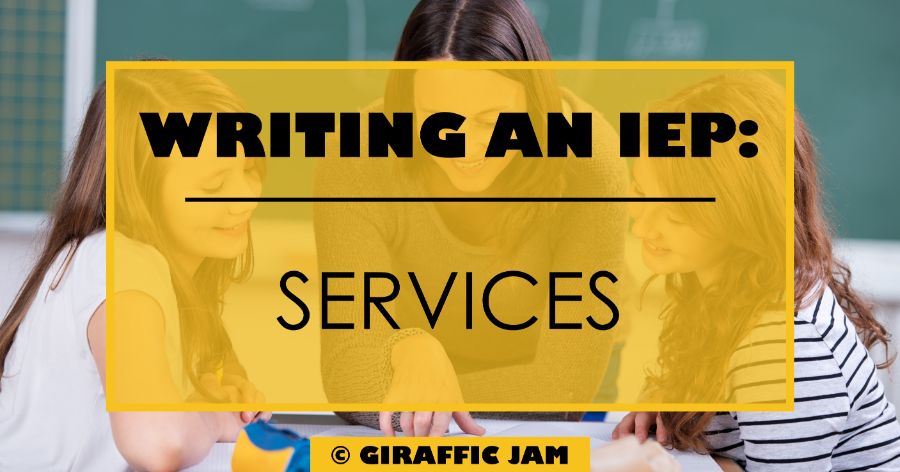
The IEP Services section of an IEP tells a provider what services are needed, how often, how frequently, and who will be providing them. Information about the location of the services and educational practices to be used during the sessions are also included. When you write an IEP service page, if the child were to move or get a new teacher he should be able to easily pick up and continue providing services like you have been. This prevents students from having gaps in their services when they move schools or teachers get new caseloads.
This is the easiest to write, but hardest to choose. How often will you see the child and for how long? I always write mine as ‘sessions per week’. But depending on your student, it may make more sense to write a specific number of services per day or per month. Make sure you clearly state how many sessions are for each goal area (4 reading comprehension sessions, 2 math sessions, and 1 behavior session). This will make sure everyone understands exactly how much time a student needs to work on a goal to make progress.
Who is going to provide the services? In my district, a gen ed teacher, special education teacher, or instructional assistant can all provide academic services. So, I make sure I check all three boxes. Remember, if someone is providing services who is not directly stated, you may not be able to claim services were provided for those sessions. Be specific and include any staff member who may be providing academic services to the student.
Will services be provided as a whole class, small group, or one on one. It may fluctuate, so it’s ok to list more than one option. Make sure you are picking the service delivery that is most appropriate for your student.
Will you be providing services in the general education classroom? Or pulling them out to a separate location? Make sure you clearly state where they services will be provided.
High Leverage Practices (HLPs) are 22 practices that address the best practices for special education teachers to master and demonstrate. HLPs fall into one of four categories: collaboration, assessment, social/emotional/behavioral, and instruction. By using HLPs you are ensuring your students best chance for content mastery and growth. When we write them in the service page, we are ensuring that future teachers know which practices are most effective for this particular student.
Until March of 2020 (Hello, COVID!) this was a non-issue in my district. The thought of closing schools for a long period of time was unheard of. But, now we know that it’s a possibility. And those closures really caused a lot of problems for our students. Legally and academically the closures impacted our families more than we would ever realize.
Now, we make it a standard practice to include in our service page what will happen if school is closed for more than 10 days. Our standard practice is to put that virtual services will be provided. We use the same format and information as discussed above, but make sure to explain that it will happen virtually. This will protect us in the future from scrambling to figure out what we will do if we have to close again for a long period of time.
The IEP services page is a valuable place with tons of great information. When you write the page, make sure it’s something that can be understood by other staff members. The idea is to provide information so that as services are provided, the same amount of progress can be made. We never want a child’s progress to fail because they got a new teacher and they don’t know how often to provide instruction or with what intensity.